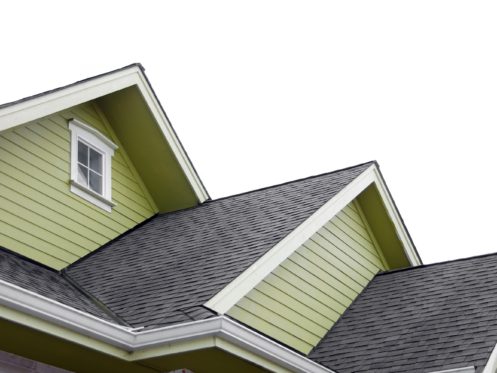Updated January 18, 2024
The adventure with your new home is exciting and full of hope for your future in this space. However, it can also be filled with stress, not knowing what major expenses may pop their head at any moment, like your heating or air conditioning. Use this checklist to help you assess the condition of your current heating and cooling systems and whether you may need a replacement.
Start With a Maintenance Visit
Unless you bought a new construction with an entirely new HVAC system, you might want to start with a maintenance visit. These are commonly conducted during the fall and spring to help keep your system operating efficiently.
Having system maintenance is a great way to get a handle on the current condition of your system. Your technician will clean your condensing and evaporator coils, the heat exchanger, the furnace burner, and the circulating fan motor to help restore efficiency.
Your technician will test your system’s cycling and the different system components to make sure everything’s working optimally. It’s through this testing you’ll get a good sense of what may be wrong with the system right now. They’ll also be able to tell you how well the system was maintained by the previous owner. How well the system is maintained influences the length of its service life. With less maintenance, you’re more likely to experience early component failure.
Determine Your System’s Age
With proper maintenance, air conditioners have an average service life of 10 to 15 years, while a furnace is 15 to 20 years. Knowing the age of your system, along with how well it’s been maintained, gives you a good sense of when you may expect to replace the system.
There are a few ways to find your system’s age. First, take the access panel off the front of your furnace and look for the manufacturing label, where you’ll find the serial number. If you do not find the label, turn off the unit’s power, and look on the circulating fan motor or fan wheel. Older furnace models often stamped the serial number on these parts to make it easy to find.
That serial number will tell you when the unit was manufactured. The first two digits of the serial number tell you the week of the year it was produced. The third and fourth numbers tell you the year. For instance, 1203 tells you the unit was produced toward the end of March in 2003.
For your air conditioning, look at the back of the cabinet of the condensing unit, and you’ll find a stamped nameplate. That nameplate should list when the unit was manufactured.
If you find that either unit is nearing the end of its expected service life, you can begin planning its replacement. This will give you time to budget for a new unit before you experience a catastrophic failure.
Evaluate Its Size
Another important consideration of your system is whether the size matches the space it serves. A unit that’s too small for your space will run excessively long cycles. This drives up your utility costs and increases the number of repairs your system requires.
It’s common for a system to no longer match the serviced space after there’s been a home renovation of some kind. If the previous homeowner added any space, including a finished basement or attic, a sunroom, or a full addition, then the system may no longer be the appropriate size.
The best thing to do is to have a professional technician come out and evaluate your needs compared to the system. Not only will they consider the number of square feet being conditioned, but they’ll also consider variables like your home’s construction, the outside environment, and how many people occupy your home.
Check for Damage
A key indicator of your system’s condition is whether there is any physical damage to its units. At your furnace, check for rust on the housing and excessive moisture on the ground around it.
For your outside condensing unit, check for signs of corrosion and cracks or dents in the housing. Pay particular attention to the fins on the condensing coil to see if they are flattened or otherwise damaged.
Visible damage to either unit can indicate further problems with the components inside the unit. Damage to the coil fins will reduce the airflow through the system, reducing its efficiency and wearing components like the compressor.
Consider the Thermostat
Your thermostat is as important as the furnace or air conditioner, being it controls the entire system. Thankfully, it’s a much less expensive part of the system, so it’s affordable to maintain and replace. Most digital thermostats last between 10 and 15 years.
During that time, it’ll need a battery replacement about twice a year. Start by replacing your thermostat’s battery, then check the accuracy of the digital reading against an independent thermometer.
Make sure your thermostat has effective programs for your schedule. If the program features aren’t robust enough, you may want to replace it with one that fits your lifestyle. Likewise, if it isn’t reading the temperature accurately, or if it’s more than 10 years old, you may want to consider a replacement.
Review Repairs
The repair history for your unit can give you an indication of where it is in its service life. HVAC professionals have found that repairs begin dramatically increasing during the last two years of its service life.
The process for evaluating the repairs compared to getting a replacement unit is simple. If you don’t have the repair history, then look at what repairs are currently needed. Multiply the cost of those repairs by the age of your unit. If that sum is greater than the cost of a new unit, start planning for the replacement. It may not make sense continuing to sink your resources into repairing the unit rather than investing in a new one.
Evaluate Energy Consumption
In addition to your repairs, you’ll want to evaluate your energy consumption. Both air conditioning and heating systems lose some of their efficiency as they age. This is especially true if the previous homeowner neglected routine maintenance.
If the previous homeowner is unwilling to share their energy usage history with you, your electric and gas providers may be able to provide it to you. Contact AmerenUE, Cuivre River Electric Cooperative, or Laclede Gas Company to request the records.
Ideally, you’ll want the last 2 years’ data to review. What you’re looking for is a significant increase in year-over-year usage for each month. Consistent and significant increases suggest one of your appliances has lost efficiency. This information, combined with your system’s age, physical condition, maintenance history, and needed repairs helps guide your decision on your next steps.




